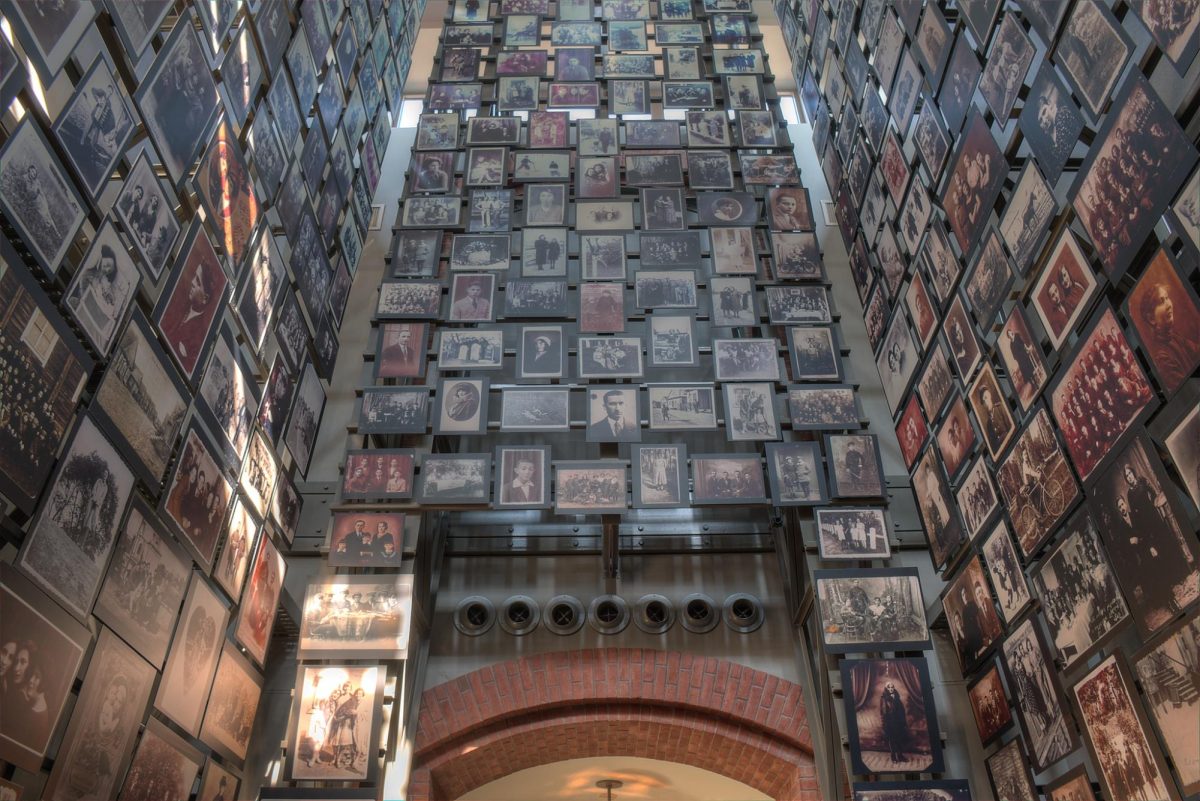Head of School Suzanna Jemsby was at the National Association of Independent Schools conference in Philadelphia in late February 2020 when the head of a school in Seattle said she was worried about the coronavirus forcing her to close school.
“I remember getting to the train station to come back down and I called [Associate Head of School Natasha] Bhalla and I said ‘Natasha, we have to pull together a team quickly,’” Jemsby said. “I think we’re going to be in crisis mode here in a couple of weeks. And that’s exactly what happened.”
On March 13, 2020, the school shut down in-person learning, marking the beginning of the pandemic for most WIS families. Packed assemblies and busy hallways were replaced with Zoom calls and a year of social distancing.
Now, a year later, students attend in-person school only every other week, and life remains very different from the way it was last February.
Little is known about what went on in March as administrators scrambled to prepare for an inevitable school closing and students went through their days, having no idea that they would not return to campus for over six months. Dateline spoke with school officials, teachers, and students to tell that story.
The early stages
In late January, the pandemic was concentrated in Asia, and life in America was completely normal. Due to WIS’s international connections, administrators began their preparations for pandemic response before the virus arrived in the U.S.
“We have former colleagues who are now in Japan, China, South Korea, who were telling us that they woke up one morning, and school was closed,” Middle School Principal Randy Althaus said.
Jemsby cited her trip to a January teacher recruitment fair in London, where she hired Upper School Math Teacher Eugene Wang and Primary School English Teacher Kaitie Eifert. Both Wang and Eifert were teaching at international schools in China at the time, before arriving at WIS this school year.
“By the time our conference in London finished, what we saw on the news appeared to be just getting worse by the day,” Wang said. “People started to panic.”
Wang and his wife stayed in London, before moving to Morocco for a month, where he taught remotely. They eventually made it back to their home in Chengdu in the spring. Jemsby noted that speaking with Wang in February was the first time she heard about the pandemic upending in-person instruction.
“I think we all thought, well, it’s not going to hit the States in the same way. So we didn’t think it was relevant for us,” she said. “And then it just came like a snowball.”
‘A vortex of everything going down the pan’
By February, cases started arriving in the U.S. On February 24, the academic teams from the primary, middle, and upper schools met to begin developing contingency plans for online learning. By March 7, each division had drafted a full proposal for what online learning might look like, and the plan was finalized the same week WIS shut down.
Among all of this, a flurry of cancellations was starting. First, on January 28, the June trip to China was canceled. On March 2, the eighth grade trip to Paris, scheduled for late March, was also postponed, as cases in Europe were climbing. The eighth grade language trip to Peru and the 10th grade service trip to New Orleans, also scheduled for late March, were still expected to take place. “Of course, with the constantly-evolving situation, we cannot rule out the possibility of these trips being affected,” Jemsby wrote in an email that day.
On March 9, the trips to New Orleans and Peru were postponed. The primary reason for the decision was the travel restrictions that could have prevented the groups from returning to Washington.
“We were naive. We rescheduled [the Peru trip] for June, rebooked all of our tickets, then we rescheduled again for October. And we had no idea that it would be this long,” Althaus said.
Freshman Jake Drimmer was disappointed about the cancellation, but notes that the Class of 2024 isn’t attached to eventually going to Peru. “I think people have moved on for the most part,” he said.
Junior Dominic Torres-Garcia remembers being on the outdoor basketball court when his friends started rushing to check their emails. They had just gotten word that the New Orleans trip was canceled. “I was pissed off about it. But I got over it eventually, honestly,” Torres-Garcia said.
Susan Chung-Fontaine, an English teacher and Class of 2022 advisor, remembers the disappointment students and teachers felt about the trip’s cancelation. Students had already gotten excited about the trip and chosen their service projects for the week. Advisories had made restaurant reservations.“In retrospect, it’s understandable. But leading up to it we were like, can we get around this? Do we really have to cancel the trip?” Chung-Fontaine said.
The senior Civil Rights trip and a Mock Trial trip to Richmond were also called off on March 9, the Monday before WIS shut down. Jemsby describes the cascade of cancellations as “a vortex of everything going down the pan.”
Preparing for the inevitable
For students, the last week of school was business as usual. Spring sports practices were starting. Upperclassmen crowded Davies Hall at lunch. Some students were preparing for opening night of the Upper School production of “Metamorphoses” on March 12.
Nonetheless, issues concerning safety lingered over Tregaron among some parents and teachers. On March 7, there was a case of COVID-19 at Christ Episcopal Church in Georgetown. One WIS family who attended that church isolated at home.
Teachers spent the Tuesday and Thursday afternoons of that week training for distance learning. On March 11, Jemsby announced that a teacher’s spouse started showing some COVID symptoms, and that teacher was staying home. The day before, the faculty had met in the Dacha and the teacher who had been possibly exposed was present. This stoked anxiety in some teachers. It was never confirmed whether the teacher’s spouse actually had COVID due to the shortage of tests at the time.
“What we knew about COVID at the time was if you clean a classroom, you should be fine. But my god did some of the faculty freak out, so we had to make a very big deal of getting the most aggressive cleaners and basically fumigating the classroom and not letting anybody in for 24 hours,” Jemsby said. There was a deep cleaning of certain spaces on campus during the evening of March 11.
During those few weeks where the coronavirus was a threat, but the U.S. had not shut down, parents reached out to administrators citing their concerns. Some of their parents’ requests underscored the frenzy of the weeks leading up to the shutdown.
“People would say you need to do what they’re doing in France. The example was given of how they’re collecting sewage in a town and figuring out the levels of COVID infection,” Jemsby said. “I’m not about to go and collect the sewage here at WIS and figure this out.”
Signs reminding students to properly wash their hands popped up around campus. On March 10, the Middle School held an assembly to discuss online learning and give instructions on handwashing and physical distancing. With a “Keep Calm and Wash Your Hands’’ sign projected on the gym screen, Althaus led students in a middle school-wide singing of “Happy Birthday” to encourage students to sing the song twice while washing their hands.
“I think back now and kind of cringe at having all the kids in the gym together on the bleachers,” Althaus said.
Shutting down
The week before WIS closed, Jemsby met with officials from the State Department to discuss a plan to bring IB students who were stranded from their homes in China to WIS. The students would have begun attending classes at WIS and taken their IB exams at Tregaron. This was when many people believed the coronavirus would not hit the U.S. hard.
“We were planning to give the kids a community because they were so massively isolated,” Jemby said. “And then, of course, days later, we don’t have a community ourselves to really bring them into.”
Other local schools were already shutting down, and D.C. Mayor Muriel Bowser announced limits on gatherings. On March 12 all students and parents received an email from the administration: “In light of all the information we have received and reviewed, we have determined the best course of action is to close school for students after Friday, March 13.”
“I think it’s sad that when the announcement came out, the senior lounge was kind of cheering,” WIS Class of 2020 graduate Zoe Abel said. A similar jubilant reaction prevailed among students around campus. Sophomores were jumping on top of each other in joy in the Hall of Peace, and many students were excited to have two weeks off from school.
Even after WIS students had been sent home on March 13, Jemsby opted to bring teachers to campus the following Monday and Tuesday to further prepare for distance learning. Teachers and administrators collected belongings and learned more about the virtual model. The decision was met with concern as the virus was spreading in the D.C. area and there was limited social distancing over the two days.
“I’m still glad we did it, because I think our teachers went in better prepared than some other schools to handle the challenges of teaching in a virtual model,” Jemsby said.
On March 18 and March 19, WIS held the first day of virtual learning. “I remember that first morning to be quite honest, just laying my stuff out on my kitchen counter and teaching in this way, for the first time ever,” Chung-Fontaine said. “It was a little bit of a shock.”
Jemsby wanted to start a “pilot” plan to return to school in-person during April. But on March 30, Bowser announced a stay-at-home order. Bowser didn’t lift the order until May 28, just 13 days before the last day of the 2019-20 school year.
Looking back
Abel, now a college freshman, has regrets about March 13. “There’s teachers I would want to say thank you to for being there for four years and for teaching me and for helping me grow as a person,” Abel said. “Those are difficult conversations to have over FaceTime.”
On October 5, WIS returned students to campus for the first time, and the hybrid model has remained in place ever since. In late November, the school introduced a pooled COVID testing program, testing students on campus every Monday and Friday.
For Wang, coming to WIS has felt like repeating what he went through a year ago. “It feels like a roller coaster in a way because I went through the whole cycle while I was there. We started distance learning. We did that for a couple months, then went back to school. Everything resumed,” he said. When Wang came to Washington in the fall, that cycle repeated: he started the year teaching on Zoom and eventually returned to campus with precautions in place.
Both Jemsby and Althaus expressed gratitude for teachers. When WIS announced the transition to hybrid October, the school did not give all teachers the option to teach from home. Jemsby referred to another independent school in the area, which allowed teachers to work from home. Many of the school’s teachers refused to return to the classroom unless they were vaccinated. However, until March 10, teachers could only qualify for the vaccine if they had worked in person, delaying the return of many teachers. Appointments opened for teachers teaching in person on February 1.
“You [students] can go on winter break or spring break and see your family and then participate in at-home learning, but teachers have to come to campus and they have to cut visits short,” Althaus said. “Many of them opted out of travel, myself included. I haven’t seen my family in almost two years now.”
While everybody was at home in the spring, Jemsby and Director of Facilities and Operations Dale Temple came to an eerily quiet Tregaron every day.
“There were two of us here rattling around the building by ourselves. And it was just such a tragedy. I thought ‘this is crazy,’” Jemsby said. “We have a school right here. Why can’t we be here?”
By Saul Pink and Anders Westermann
Additional reporting by Rebeka Tatham

































































